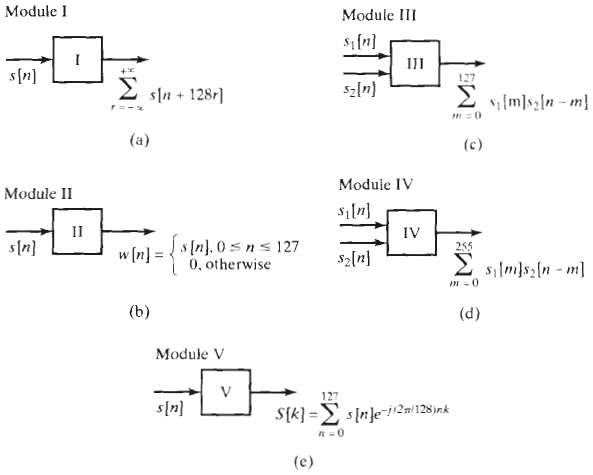X[n] and y[n] are two real-valued, positive, finite-length sequences of length 256; i.e.,? x[n] > 0, 0
Question:
X[n] and y[n] are two real-valued, positive, finite-length sequences of length 256; i.e.,?
x[n] > 0, 0 ? n ? 225,
y[n] > 0, 0 ? n ? 255,
x[n] = y[n] = 0, otherwise
r[n] denotes the linear convolution of x[n] and y[n]. R(ej?) denotes the Fourier transform of r[n]. Rs[k] denotes 128 equally spaced samples of R(ej?); i.e.,
Rs[k] R(ej?)|w=2?k/128,? ? ? ? ?k = 0. 1,?., 127.
Given x[n] and y[n], we want to obtain Rs[k] as efficiently as possible. The only modules available are those shown in Figure. The costs associated with each module are as follows:
Modules I and II are free.
Module III costs 10 units.
Module IV costs 50 units.
Module V costs 100 units.?

By appropriately connecting one or several of each module, construct a system for which the inputs are x[n] and y[n] and the output is Rs[k]. The important considerations are (a) whether the system works and (b) how efficient it is. The lower the total cost, the more efficient the system is.
Step by Step Answer:

Discrete Time Signal Processing
ISBN: 978-0137549207
2nd Edition
Authors: Alan V. Oppenheim, Rolan W. Schafer





